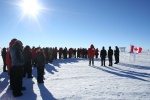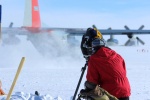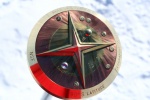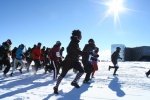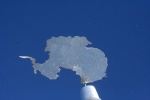There are
“winterovers”
467
Friday, March 1, 2013 - 12:15pm
A great shot of the last LC-130 leaving the station. It marks the beginning of the winter season, in which the Pole’s population remains steady, this year at 44 people.
Article
Thursday, February 21, 2013 - 12:15pm
Everything coming to or leaving the Pole goes through McMurdo Station on the coast. And it’s a busy place—a complex logistics facility that includes a harbor, three airfields, and a heliport.
Article
Wednesday, February 13, 2013 - 12:15pm
For some, ice cream is a summertime treat. For others, it’s good just about anytime. Looks like the folks at the Pole fall into the “others” camp.
Article
Tuesday, February 12, 2013 - 6:15pm
It takes a lot people power to run the IceCube Neutrino Observatory. An international collaboration that includes hundreds of physicists, engineers, computer scientists, and administrators works year-round to run the detector, analyze data, and develop new projects.
Article
Friday, February 8, 2013 - 1:00pm
A solemn ceremony was held at the South Pole to commemorate the crew of the Twin Otter, a plane that went down on its way from the Pole to Terra Nova Bay.
Article
Tuesday, January 29, 2013 - 12:00pm
They are set up well at the South Pole station, with comfortable (enough) living quarters, tasty meals, and engaging activities.
Article
Wednesday, January 23, 2013 - 12:00pm
The IceCube winterovers have plenty of darkness to look forward to in the coming months, but in the meantime they’ve been outside in the sunlight doing all sorts of things.
Article
Thursday, January 17, 2013 - 1:30pm
A flurry of activities marked the end of 2012 and the beginning of 2013, a marathon and a golf tournament among them. There was also the traditional ceremony to remark the geographical South Pole.
Article
Thursday, January 10, 2013 - 1:30pm
Not sure what the costume is all about, but these people are clearly running a race. Around the world that is.
Article
Friday, December 14, 2012 - 1:30pm
Antarctica’s a cold continent, and all of the activities at the South Pole would not be possible without abundant sources of energy, which must be transported in. Since all supplies to the Pole come from McMurdo Station on the coast, the “South Pole Traverse” was developed as a viable option to reduce dependence on airlifts, which are routinely delayed due to inclement weather.
Article





